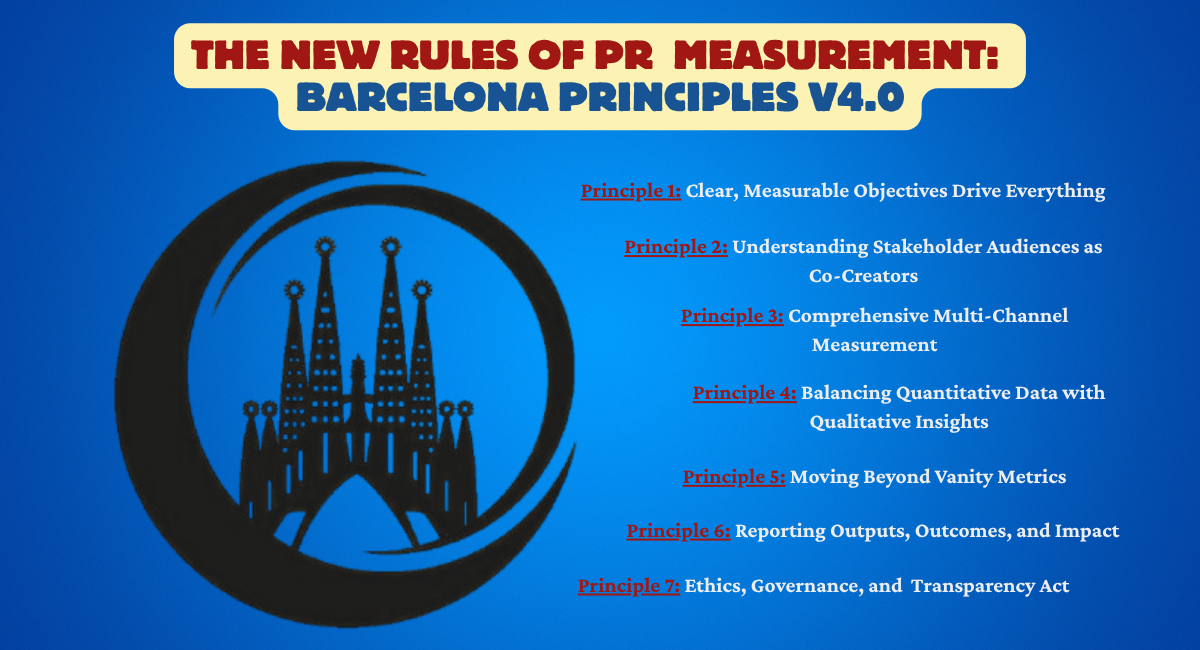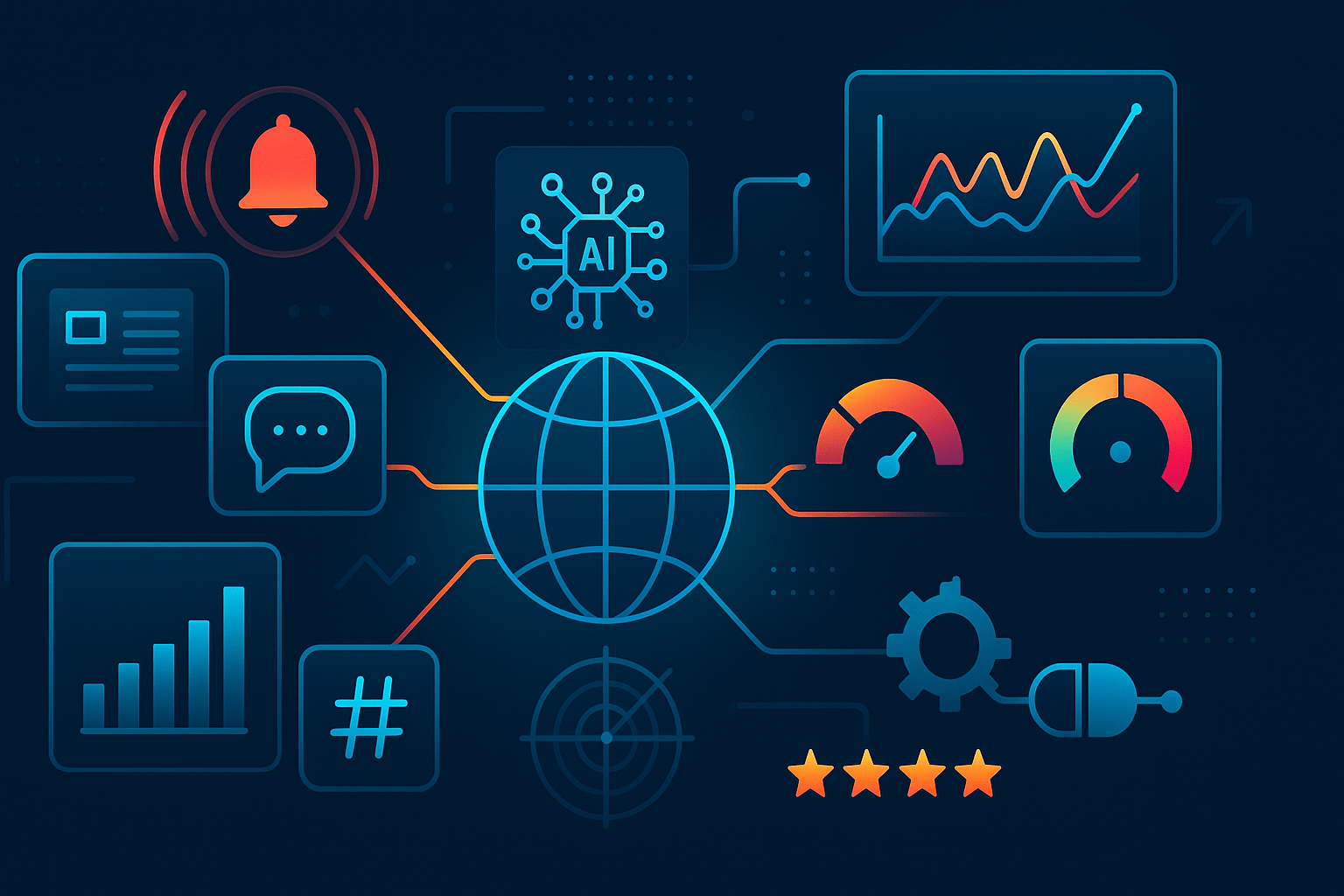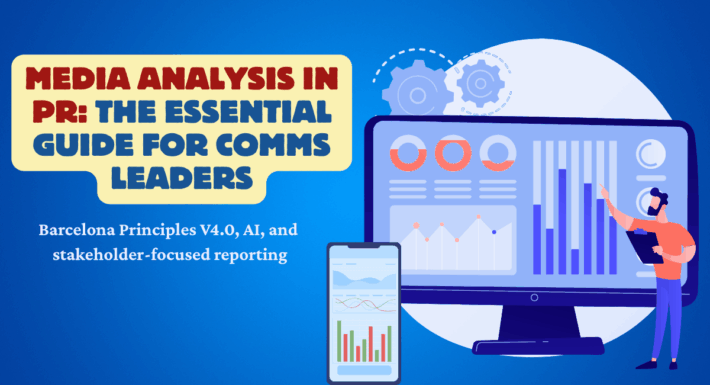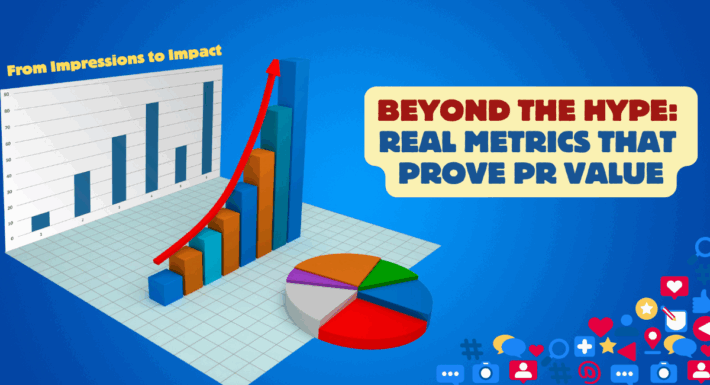Barcelona Principles V4.0: The Complete Guide to Modern PR Measurement for Today’s Professionals

The Barcelona Principles V4.0 represent the most sophisticated evolution yet in PR measurement standards. Released in June 2025 by AMEC (International Association for the Measurement and Evaluation of Communication), this latest version arrives at a crucial moment when artificial intelligence is fundamentally transforming how organizations measure and demonstrate communication impact.
For PR professionals navigating an increasingly complex media landscape, V4.0 provides the roadmap for implementing measurement strategies that truly demonstrate business value while maintaining ethical standards in our AI-driven era.
Understanding the Barcelona Principles V4.0 Framework
Barcelona Principles V4.0 maintains the seven-principle structure that has guided the industry since 2010, but with critical enhancements that reflect today’s measurement realities. The principles emphasize that effective measurement requires both human insight and technological precision — a balance that’s become increasingly important as AI tools proliferate across the industry.
The updated framework positions measurement as strategic intelligence rather than merely reporting. This shift recognizes that modern media monitoring must deliver actionable insights that inform decision-making, not just document what happened after the fact.
Principle 1: Clear, Measurable Objectives Drive Everything
Setting SMARTER objectives (Specific, Measurable, Achievable, Relevant, Time-bound, Evaluated, and Reviewed) remains the foundation of effective measurement. However, V4.0 emphasizes that objectives must be flexible and responsive to changing circumstances, which is particularly important for crisis communications where situations evolve rapidly.
The principle now explicitly calls for objectives that align with both organizational performance and societal impact, reflecting the growing importance of ESG considerations in corporate communications.
Principle 2: Understanding Stakeholder Audiences as Co-Creators
The most significant evolution in V4.0 is the shift from viewing audiences as passive recipients to understanding them as active participants in the communication process. This principle emphasizes building trusted relationships through genuine two-way dialogue rather than one-way broadcasting.
For PR professionals, this means implementing listening strategies that go beyond simple sentiment analysis to understand nuanced stakeholder perspectives and motivations.
Principle 3: Comprehensive Multi-Channel Measurement
The media landscape has become increasingly fragmented, with new platforms and formats emerging regularly. V4.0 recognizes that comprehensive measurement must encompass all relevant channels where stakeholders engage, from traditional media to social platforms, podcasts, newsletters, and emerging digital spaces.
This principle specifically addresses the challenge of measuring across paid, earned, shared, and owned media in an integrated way — moving beyond channel silos to understand holistic communication impact.
Principle 4: Balancing Quantitative Data with Qualitative Insights
While automation and AI provide unprecedented access to quantitative data, V4.0 reinforces that meaningful measurement requires combining numbers with context. Qualitative analysis provides the “why” behind the metrics, uncovering motivations, perceptions, and sentiments that pure data cannot reveal.
The principle acknowledges that AI can enhance analysis capabilities but emphasizes the continued importance of human interpretation for strategic decision-making.
Principle 5: Moving Beyond Vanity Metrics
V4.0 continues the industry’s long-standing rejection of Advertising Value Equivalents (AVEs) and similar invalid metrics. Instead, the framework promotes outcome-focused measurement that demonstrates how communication activities contribute to organizational objectives and stakeholder value.
This principle provides specific guidance for transitioning away from discredited metrics and implementing measurement frameworks that capture genuine impact.
Principle 6: Reporting Outputs, Outcomes, and Impact
The latest version clarifies the distinction between outputs (what you produce), outcomes (changes in stakeholder attitudes or behaviors), and impact (broader organizational or societal effects). Effective measurement programs must track all three levels to demonstrate comprehensive value.
This integrated approach helps PR professionals tell compelling stories about their work’s strategic contribution to organizational success.
Principle 7: Ethics, Governance, and Transparency
Perhaps the most timely addition to V4.0 is the enhanced emphasis on ethical data practices and transparent methodologies. As AI tools become more sophisticated, the principle demands that measurement practitioners be able to explain their methods and justify their conclusions.
This includes transparency about AI usage, data sources, and potential biases — critical considerations as predictive analytics become more prevalent in PR measurement.
The Role of AI in Modern PR Measurement
V4.0 acknowledges that AI has fundamentally transformed measurement capabilities while emphasizing the continued importance of human expertise. Modern AI applications in PR measurement include:
Advanced Sentiment Analysis: Beyond basic positive/negative classification, AI now detects complex emotions, understands cultural context, and identifies subtle sentiment patterns that human analysts might miss.
Predictive Intelligence: Machine learning models can identify content likely to trend or escalate, giving PR teams a warning of potential issues or opportunities.
Automated Content Analysis: AI can process vast volumes of content to extract key themes, messages, and trends, but human oversight remains essential for interpreting strategic implications.
Real-Time Monitoring: AI-powered systems provide instant alerts and analysis, enabling faster response times during crises.
However, V4.0 emphasizes that AI should augment rather than replace human judgment. The most effective measurement programs combine AI efficiency with human insight to deliver strategic intelligence that drives better decision-making.
Implementing Barcelona Principles V4.0: Practical Steps
Start with Strategic Alignment
Before implementing any measurement program, ensure precise alignment between communication objectives and broader organizational goals. This foundational step prevents the common trap of measuring activity rather than impact.
Work with leadership to identify 3-5 key metrics that directly connect to business priorities. These metrics should be simple to understand, regularly tracked, and actionable for strategic planning.
Build Comprehensive Monitoring Systems
Effective implementation requires monitoring systems that capture data across all relevant channels and stakeholder touchpoints. This includes traditional and digital media, social platforms, industry publications, regulatory communications, and direct stakeholder feedback.
The key is balancing comprehensiveness with manageability — avoiding the common problem of drowning in data while missing strategic insights.
Invest in Both Technology and Expertise
Implementing V4.0 requires investment in technological capabilities and human expertise. While AI tools can process vast amounts of data and identify patterns, human analysts provide the strategic interpretation that drives decision-making.
Consider partnering with specialized providers who combine technological sophistication with industry expertise rather than trying to build everything in-house.
Establish Clear Governance Frameworks
With increased emphasis on transparency and ethics, establish clear governance frameworks for your measurement programs. This includes:
- Documentation of methodologies and data sources
- Clear policies for AI usage and human oversight
- Regular audits of measurement accuracy and bias
- Transparent reporting of limitations and uncertainties
Focus on Continuous Improvement
Barcelona Principles V4.0 emphasize measurement as an iterative process rather than a one-time implementation. Based on results, stakeholder feedback, and evolving best practices, regularly review and refine your approaches.
Common Implementation Challenges and Solutions
Budget Constraints
Many organizations struggle to allocate sufficient resources for comprehensive measurement. The solution involves treating measurement as an investment rather than a cost, typically budgeting 5-10% of total PR spend for measurement activities.
Demonstrate ROI by starting with pilot programs that show clear value, then gradually expanding measurement capabilities as benefits become apparent.
Technology Integration Issues
PR teams often face challenges integrating multiple tools and platforms. Address this by standardizing on fewer, more comprehensive solutions rather than juggling numerous point tools.
Focus on platforms that offer API integrations and can consolidate data from multiple sources into unified dashboards.
Skills Gaps
The evolution toward more sophisticated measurement requires enhanced analytical skills. Address this through:
- AMEC certification programs for team members
- Partnerships with measurement specialists
- Investment in training and professional development
- Hiring analysts with relevant statistical and research backgrounds
Executive Buy-In
Securing leadership support for measurement programs requires speaking the language of business impact rather than PR metrics. Focus on how measurement enables better strategic decisions, risk mitigation, and competitive advantage.
Provide regular reports that clearly connect communication activities to business outcomes that leadership cares about.
The Future of PR Measurement
As Barcelona Principles V4.0 becomes the industry standard, several trends will shape the future of PR measurement:
Integration with Business Intelligence: PR measurement will increasingly integrate with broader organizational data systems, providing communication insights within enterprise dashboards alongside financial, operational, and customer data.
Real-Time Strategic Adjustment: Advanced analytics will enable real-time optimization of communication strategies based on immediate feedback and performance indicators.
Stakeholder Journey Mapping: Measurement will evolve from campaign-specific metrics to comprehensive stakeholder journey analysis, tracking how different touchpoints influence long-term relationships.
Predictive Planning: AI-powered forecasting will help PR professionals anticipate communication needs, potential issues, and strategic opportunities before they fully emerge.
Building Your Barcelona Principles V4.0 Implementation Plan
Successfully implementing the Barcelona Principles V4.0 requires a systematic approach:
Phase 1: Foundation Building (Months 1-3)
- Align measurement objectives with business goals
- Audit current measurement capabilities and gaps
- Establish governance frameworks and ethical guidelines
- Select technology partners and platforms
Phase 2: System Development (Months 4-6)
- Implement comprehensive monitoring across all relevant channels
- Develop reporting templates and dashboard configurations
- Train team members on new tools and methodologies
- Establish baseline metrics and benchmarks
Phase 3: Optimization and Scaling (Months 7-12)
- Refine measurement approaches based on initial results
- Expand monitoring to additional channels and stakeholder groups
- Develop predictive analytics capabilities
- Create advanced reporting for strategic planning
Phase 4: Continuous Improvement (Ongoing)
- Regular methodology reviews and updates
- Integration with emerging technologies and platforms
- Expansion of measurement scope and sophistication
- Knowledge sharing and industry collaboration
Key Takeaways for PR Professionals
Barcelona Principles V4.0 represents both the culmination of 15 years of measurement evolution and a roadmap for the next decade of PR excellence. For today’s PR professionals, the principles offer several critical insights:
Measurement Must Drive Strategy: Effective measurement isn’t about proving past performance — it’s about enabling future success through better decision-making and strategic insight.
Technology Amplifies Human Insight: While AI and automation provide unprecedented analytical capabilities, human expertise remains essential for interpreting results and developing strategic responses.
Transparency Builds Trust: In an era of “black box” algorithms, transparent methodologies and explainable results build credibility with stakeholders and leadership.
Integration Is Essential: Siloed measurement provides limited value. The most effective programs integrate across channels, campaigns, and organizational objectives to provide holistic insights.
As the PR industry continues evolving in our digital, AI-driven era, Barcelona Principles V4.0 provides the framework for measurement that demonstrates genuine value, maintains ethical standards, and drives strategic excellence. Organizations that embrace these principles will find themselves better positioned to navigate challenges, capitalize on opportunities, and demonstrate the strategic value of professional communication.
The investment in implementing Barcelona Principles V4.0 pays dividends not just in better measurement but in elevated strategic thinking, improved stakeholder relationships, and enhanced organizational resilience. For PR professionals committed to excellence, these principles aren’t just guidelines — they’re the foundation for building communication programs that deliver measurable, meaningful impact.

Ted Skinner
Ted Skinner is Vice President of Marketing at Fullintel, where he focuses on developing practical applications of AI in media monitoring and strategic communication measurement. With extensive experience in crisis communication strategy and competitive intelligence, Ted specializes in helping PR professionals implement effective measurement frameworks that demonstrate tangible business value.
Ted regularly contributes to industry discussions on AI implementation in PR, media monitoring best practices, and the evolution of measurement methodologies. His work centers on bridging the gap between complex technical capabilities and actionable strategic insights for communication professionals.
Read more of Ted’s insights on AI-powered PR strategies and follow his latest thinking on modern measurement approaches.
Ted Skinner is the VP of Marketing at Fullintel with extensive experience in AI implementation for public relations and media monitoring. A recognized expert in crisis communication strategy and competitive intelligence, Ted specializes in developing practical applications for AI in PR workflows. His thought leadership focuses on helping PR professionals leverage technology to enhance strategic communications while maintaining the human insight that drives successful media relations.
Read more of Ted’s insights on AI-powered PR strategies and follow his latest thinking on modern measurement approaches.



